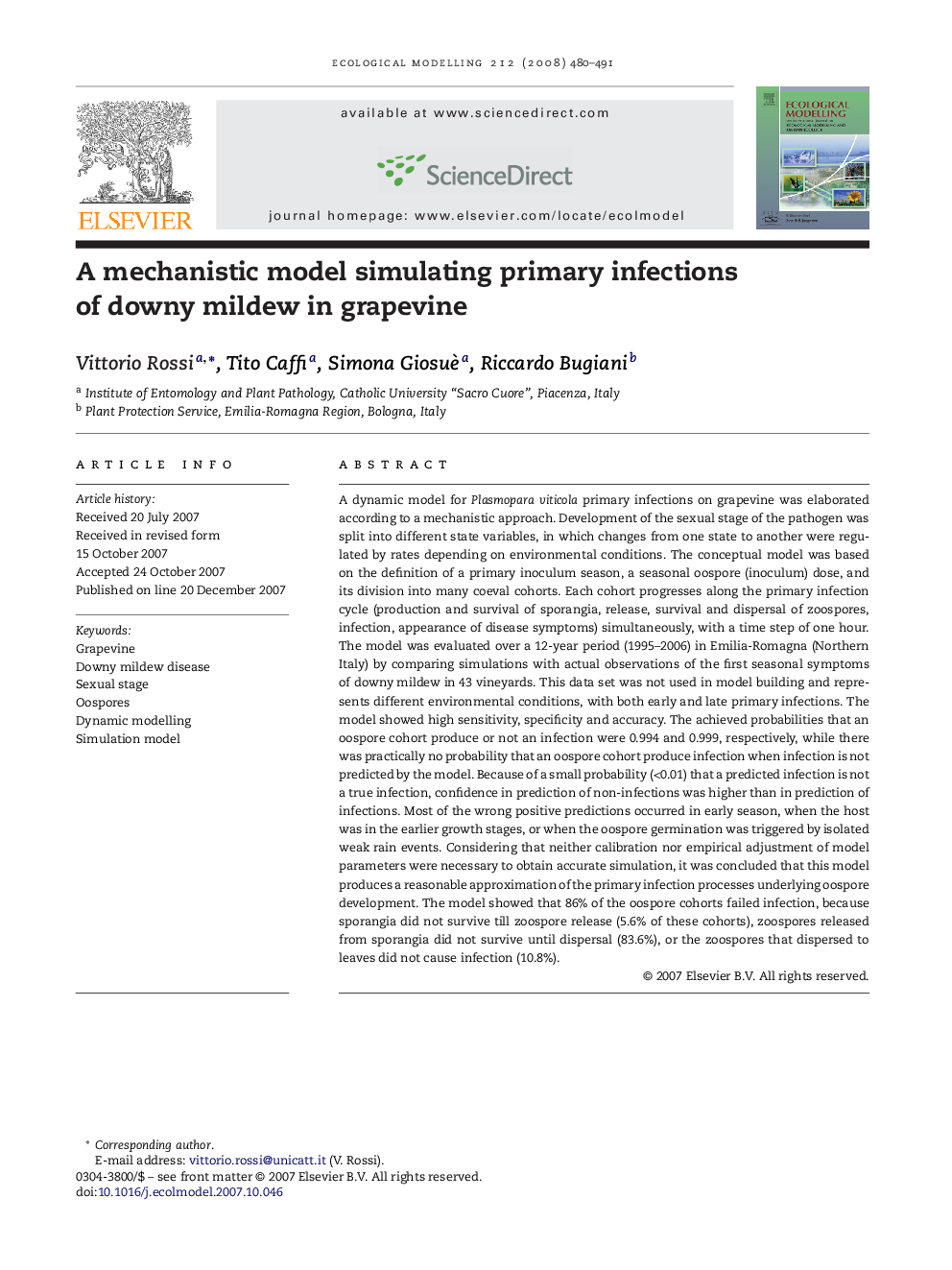| کد مقاله | کد نشریه | سال انتشار | مقاله انگلیسی | نسخه تمام متن |
|---|---|---|---|---|
| 4378325 | 1617535 | 2008 | 12 صفحه PDF | دانلود رایگان |

A dynamic model for Plasmopara viticola primary infections on grapevine was elaborated according to a mechanistic approach. Development of the sexual stage of the pathogen was split into different state variables, in which changes from one state to another were regulated by rates depending on environmental conditions. The conceptual model was based on the definition of a primary inoculum season, a seasonal oospore (inoculum) dose, and its division into many coeval cohorts. Each cohort progresses along the primary infection cycle (production and survival of sporangia, release, survival and dispersal of zoospores, infection, appearance of disease symptoms) simultaneously, with a time step of one hour. The model was evaluated over a 12-year period (1995–2006) in Emilia-Romagna (Northern Italy) by comparing simulations with actual observations of the first seasonal symptoms of downy mildew in 43 vineyards. This data set was not used in model building and represents different environmental conditions, with both early and late primary infections. The model showed high sensitivity, specificity and accuracy. The achieved probabilities that an oospore cohort produce or not an infection were 0.994 and 0.999, respectively, while there was practically no probability that an oospore cohort produce infection when infection is not predicted by the model. Because of a small probability (<0.01) that a predicted infection is not a true infection, confidence in prediction of non-infections was higher than in prediction of infections. Most of the wrong positive predictions occurred in early season, when the host was in the earlier growth stages, or when the oospore germination was triggered by isolated weak rain events. Considering that neither calibration nor empirical adjustment of model parameters were necessary to obtain accurate simulation, it was concluded that this model produces a reasonable approximation of the primary infection processes underlying oospore development. The model showed that 86% of the oospore cohorts failed infection, because sporangia did not survive till zoospore release (5.6% of these cohorts), zoospores released from sporangia did not survive until dispersal (83.6%), or the zoospores that dispersed to leaves did not cause infection (10.8%).
Journal: Ecological Modelling - Volume 212, Issues 3–4, 10 April 2008, Pages 480–491